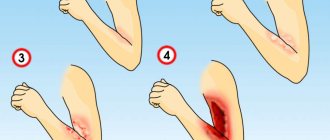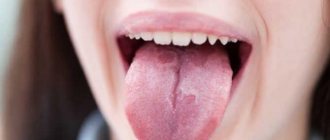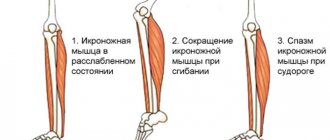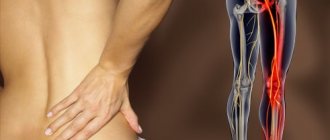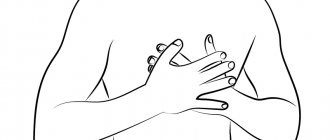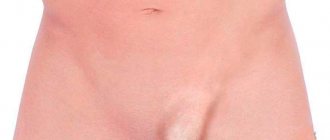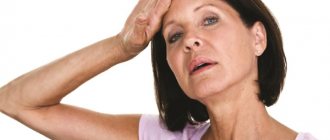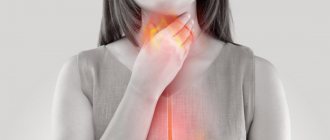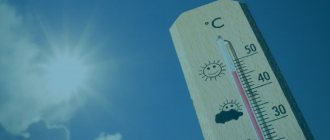Tanning is a protective reaction of the skin to the harmful effects of ultraviolet radiation.
UV rays are invisible to the human eye. They come in 3 types: UVA, UVB and UVC types. The latter do not reach the surface of the earth, so we will not consider them, but the first 2 types can penetrate the skin, causing burns and more serious long-term consequences.
Depending on the ability to tan, there are 6 skin phototypes:
I. Celtic - people with very fair skin and hair, blue eyes, sometimes with freckles on their faces. Short-term exposure to the sun usually results in burns.
II. Nordic - just like the first type, it is characterized by light skin color, darker hair - light brown or light brown, eyes: gray, green, or brown. The skin is practically resistant to tanning and quickly gets burned.
III. Dark European - differs from the previous type in a darker shade of skin, hair and eyes. People with this phototype already tan much better, but with prolonged exposure to the sun, they can still get a moderate burn.
IV. Mediterranean - skin color closer to dark, dark brown or black hair, mostly brown eyes. Tanning occurs quickly, burns rarely occur.
V. Indonesian - people with darker skin, hair and eyes are also dark. The tan lasts almost all year round.
VI. African American - characterized by a very dark shade of skin, eyes and hair. Such people never get burned because their skin contains a huge amount of melanin pigment.
Accordingly, types I and II are the most sensitive to the action of UV rays. Types III and IV are moderately sensitive.
Phototypes III and IV are more typical for Ukraine.
Sunburn is exactly the same tissue damage as a thermal burn, but its manifestations do not occur immediately, but more slowly, over several hours.
Depending on the severity of symptoms, the following types of burns are distinguished according to severity:
- Mild (redness of the skin, minor pain lasting 3 to 5 days, followed by minor peeling of the skin).
- Moderate (red, more painful skin, duration of symptoms about 7-10 days, with longer peeling of the skin).
- Severe (very red, painful skin, blistering, chills and fever).
A common myth is that sunburn is just a minor nuisance that is not worth much attention. But this concept is erroneous, since ultraviolet radiation can accumulate in the body and cause mutations. And the more skin mutations, the greater the risk of DNA damage and the development of tumors. In response to damage, the skin tries to protect itself. Special skin cells, melanocytes, begin to synthesize the pigment melanin, and the color of the skin depends on the amount of this pigment. Under significant exposure to UV rays, these same melanocytes can begin to transform and actively divide. This can result in melanoma, the most malignant tumor that quickly metastasizes throughout the body and is difficult to treat in advanced cases.
In Ukraine, skin cancer ranks second in terms of prevalence among tumors.
In addition, people who like to sunbathe experience skin photoaging faster. Sun rays contribute to the destruction of collagen and elastin fibers, a decrease in the level of hyaluronic acid, which leads to a decrease in skin elasticity, the appearance of early wrinkles, excessive dryness and a decrease in the regenerative properties of the skin.
Photodermatosis is solar dermatitis, that is, an allergy to the sun. A condition that is accompanied by increased sensitivity to the effects of the sun, resulting in the release of histamine, resulting in rashes and itching of the skin. And if this situation is accompanied by the influence of other irritants, such as: salt water, sweating, excessive production of sebum (sebum), then the risk of a bacterial infection or exacerbation of acne increases.
Excessive tanning can cause immunosuppression, that is, suppression of the immune system and, as a result, a decrease in the body’s resistance to viruses, bacteria, and a decrease in the ability to recognize and destroy tumor cells.
Popular drugs
PanthenolSpray effectively relieves skin inflammation. The product contains dexpanthenol, and therefore has an anti-inflammatory and healing effect. Experts noted an obstacle to the development of inflammation when using the drug, rapid elimination of burning, redness and other unpleasant signs of a burn. PanthenolSpray is an original medicinal product that has been tested over the years and has gained wide popularity. Pharmacies offer many analogues with similar packaging.
If chills are observed and the general condition is disturbed, non-steroidal anti-inflammatory drugs are used - Ibuprofen, Paracetamol. You can also use aspirin, a drug from the salicylates group.
To prevent skin dehydration, experts recommend creams based on chamomile and calendula extract, Aloe Vera, and vitamin E. The components will help the skin absorb moisture and retain it for a long time.
Important! Treatment of sunburn does not allow the use of alcohol-containing lotions and other cosmetics, since they further dry the skin and cause additional injury. In addition, when washing burnt skin, you should not use soap, or overload it with too greasy creams.
Important! When blisters appear, it is absolutely unacceptable to pierce them.
3. Pain relief. Paracetamol, Aspirin, Acetaminophen and Ibuprofen help to cope with pain. Itching and burning are reduced by antihistamines. Aspirin in combination with ibuprofen inhibits the formation of toxic substances that cause swelling and redness of the skin. A regular cool bath helps reduce fever and pain. Symptoms of burning are caused by active blood flow, which is caused by severe inflammation, and cold water constricts blood vessels and alleviates the condition. But you can’t rush to get into the shower - these are the same microtraumas, unnecessary pain.
So, what do you need to consider to prevent sunburn?
- Use a broad-spectrum UVA + UVB sunscreen with a sun protection factor of SPF 30 or higher.
- Apply sunscreen in sufficient quantity to the entire body within 30 minutes. before going outside. It is advisable to reapply the cream every 2 hours. Check the expiration date of the cream first.
- Use balm or lipstick with SPF, and wear sunglasses.
- The optimal hours for sun exposure are in the morning before 10:00 and in the evening after 16:00.
- More clothing means more skin protection, so it is advisable to cover exposed skin in the sun. It is recommended to wear a hat on your head.
If it so happens that you have already received a burn after excessive sun exposure, then you need to understand in what situations it is necessary to consult a doctor? If you have:
- Severe swelling of the skin;
- There is no relief in health for several days;
- Possible skin infection (severe pain, swelling, purulent discharge, fever);
- Blisters cover a large area of skin, or are located on the face, hands, or genitals.
GBUZ of the Republic of Crimea
Sunburn is damage to the skin by ultraviolet radiation. Not all types of ultraviolet radiation can cause sunburn; only long and medium wave radiation damages the skin - type A and especially type B.1. Ultraviolet radiation - long waves (UVA) can activate rapid production melanin is the pigment of the skin, and accordingly a tan appears, which does not last long, since it is a kind of short-term reaction to radiation. Long waves also affect the deeper layers of the dermis, changing the structure of connective tissue and nearby small blood vessels. In addition, photoaging develops, the elasticity and turgor of the skin are lost. There are studies that statistically confirm the harmful effects of active UVA on the entire body: oxidation processes become more intense (oxidative stress), and epidermal cancer is provoked.
2. Medium wave ultraviolet radiation is called UVB. This type activates the production (synthesis) of new pigment granules in melanocytes, which manifests itself in the form of persistent pigmentation, that is, tanning and age spots. Since UVB not only promotes the synthesis of melanin, but also significantly increases the density of the upper layer of the skin - the epidermis, moderate doses of such radiation are quite safe. Excessive exposure to type B radiation can also provoke melanoma (skin cancer).
Signs of sunburn
Sunburn is manifested by the following symptoms:
1. Hyperemia (redness) of the skin, local or diffuse (widespread). 2. Swelling. 3. Irritation of damaged areas of the skin. 4. Blisters - small and large. 5. Increased body temperature. 6. Fever, chills. 7. Severe itching.8.Dehydration (dehydration) of the body.9.Infection of damaged areas of the skin.10.Shock.
Clinically, signs of a sunburn can appear literally in half an hour, but most often the typical burn picture develops within 24 hours. Manifestations begin with redness of sun-exposed areas of the body, then painful sensations develop, and blisters with liquid exudate appear inside. Secondary infection of burst blisters and miliary papules (small rashes the size of millet grains) may be the result of secondary skin lesions. Also, these signs are associated with damage to the skin of the calves and ankle areas of the legs, where they, in principle, take a very long time to heal. Severe itching occurs several days after damage, and peeling begins after 4-6 days. Signs of a sunburn can develop unnoticed, accompanied by heatstroke, then a state of shock is possible, since a significant part of the human body, including the head, is overheated.
Sunburn in children
This is undoubtedly the parents' fault. While it takes about half an hour for an adult to be exposed to harmful ultraviolet radiation, it only takes five minutes for a child to be at risk of such exposure. Although signs of skin breakdown and heat stroke may develop slowly in a child, parents should closely monitor their child's exposure to the sun. Sunburn in children is manifested by the following symptoms: Lethargy, drowsiness, or, on the contrary, anxiety, whims. Redness. Increased body temperature. Chills. Nausea, vomiting. Pale face. They are often accompanied by heat stroke, when the child’s general condition deteriorates so much that immediate medical attention is required help. The first thing adults should do before the doctor arrives is to ensure that the baby stays in a shady, cool place as soon as possible, moisten the skin with water or wrap the child completely in a damp towel or sheet. It is also necessary to reduce the risk of dehydration, that is, give the child plenty of fluids. All other treatment measures will be prescribed by the doctor after examination. Sunburn in children is most dangerous under the age of 2-3 years, so parents should take care of the maximum safety of their children in terms of protection from harmful UV exposure.
Degrees of sunburn
Sunburn, like all other types - thermal, chemical, is divided into degrees according to the strength and severity of the effect on the body. They depend on the affected area, its size, the depth of penetration of radiation into the dermal layers and the duration of its exposure.
1.I degree is characterized by a superficial effect and causes only hyperemia of the skin without papules and blisters. For all their pain, they are not threatening, even if they are spread throughout the body. If a person has been exposed to intense UVA radiation, but has not been in the sun for a long time, then everything ends with redness and some discomfort. As a rule, it does not require specialized medical care and can be treated at home.
2. The degree of sunburn directly depends on the time period of exposure to the sun, as well as on the structural features and structure of the skin. If the skin is sensitive, the person is under intense radiation for more than 2 hours, the development of stage II is possible. This is a fairly serious injury, which is characterized by the appearance of blisters, miliary papules, distributed throughout the body. Severe disturbances in the functioning of the entire body develop - dehydration, pain, elevated body temperature, nausea. Symptoms of the second degree may appear gradually, one after another, aggravating the victim’s condition. Such injuries require medical care, often in a hospital setting.
3.III and IV degrees are rare, since such severity of damage is more typical for thermal or chemical damage. Indeed, it is difficult to imagine a person who is under the scorching sun for more than 10 hours of his own free will. In the third and fourth degrees, the structure of all layers of the dermis is disrupted, subcutaneous tissue and soft tissues are damaged. In essence, this is the charring of more than 60% of the skin, its infection and, at best, scarring of the affected areas. The worst option is complete dehydration, impaired heart and kidney function, intoxication and death. The degrees of sunburn are fixed in ICD 10 in block L55.
Severe sunburn
This is photodermatosis, which can manifest itself in the form of urticaria, polymorphic dermatitis and rash, erythema. In severe cases, symptoms of shock develop - rapid pulse, pale skin, dizziness, nausea and weakness, rapid breathing, fainting. Severe sunburn is a risk for a certain category of people, which includes: Everyone with skin of the first phototype, that is, pale, sensitive. This type is also called Celtic - the skin is often covered with freckles, milky white in color. A severe sunburn can occur within 15-20 minutes after being exposed to the scorching rays. Phototype II – Nordic or light European. The skin of such people is light, also sensitive to ultraviolet radiation and poorly pigmented. A burning sensation appears within 30-50 minutes after exposure to the sun. Children under the age of 5 years, since children's skin does not perceive shock doses of ultraviolet radiation well. People aged after 55-60 years, since in this age period the skin is vulnerable and sensitive to the sun. Those who have recently experienced ultraviolet damage to the skin. Anyone diagnosed with connective tissue diseases. People suffering from systemic or oncological diseases. Anyone who has a hereditary predisposition to melanoma. People who have undergone chemotherapy and radiation. People who have recently or are currently undergoing treatment with antibiotics. Pregnant women can get severe sunburn if they do not expose themselves to the sun's rays in a shady, cool place.
Sunburn on the face
This is the most common symptom of skin damage from aggressive ultraviolet radiation. It is not difficult to guess the reason, because the face is the most exposed area exposed to inevitable sun exposure. Fortunately, sunburn on the face is usually limited to redness of the epidermis, mainly the nose, cheeks and forehead (the most prominent parts). With intense exposure to rays, swelling may occur at the site of the burning sensation. Despite the fact that it does not require medical intervention, it can seriously damage the structure of the skin and lead to its premature withering - photoaging. You can protect your face, as well as your entire body, with the help of products containing the marks UV protection and protection.
Sunburn of the eyes
In clinical practice it is called electroophthalmia. This eye disease can be caused not only by exposure to the rays of the summer sun, but also by a love of traveling across snow-capped mountain peaks, and eye inflammation is also provoked by professional factors - electric welding and exposure to mercury vapor lamps. Sunburn of the eyes causes the action of UVB rays, which disrupts microcirculation in the retina and is manifested by the following symptoms: Increased lacrimation. Photophobia. Swelling of the eyelids. Blepharospasm - spastic closure of the eyelids. Erosive lesions of the cornea and conjunctiva are possible. It develops quite quickly - from the moment of exposure to ultraviolet radiation to Symptoms appear in no more than 3-4 hours. Treatment of photoophthalmia should only be carried out under the supervision of a doctor, since independent actions will not only not help, but will also aggravate the serious condition and can lead to serious complications.
Sunburn of lips
It manifests itself as severe redness, often blisters on the sensitive skin of the lips, swelling, pain, and peeling. The skin of the lips is vulnerable because it is very thin and does not have a protective stratum corneum. All blood vessels and nerve receptors are located extremely close to the surface and are influenced by both temperature (cold, heat) and ultraviolet radiation. In addition, sunburn of the lips is almost inevitable with prolonged exposure to the sun, since melanin, a protective pigment, is not synthesized in the lips. That is why it is recommended to protect your lips with special products containing a UV protector. But the most effective way to protect against it is prevention, which involves reasonable, measured time spent in the sun.
Sunburn of the skin
It can only develop with excessive tanning. In principle, human skin is quite well adapted to thermal influences and ultraviolet radiation. If they are pigmented and do not burn, this indicates good UV tolerance; moreover, ultraviolet light can have a beneficial effect on the entire body: activate the functions of the nervous and endocrine systems, promote the formation of vitamin D. Sunburn of the skin is possible only with an unreasonable approach to the sun and thoughtless the pursuit of a beautiful tan. Prolonged exposure to the sun is also dangerous for people whose skin belongs to the risk group - phototypes I and II. Dark-skinned, dark-skinned “lucky” people can easily tolerate the heat and activity of the sun, since they produce much more protective pigment - melanin. For everyone else, ultraviolet radiation can disrupt the structure of the dermis and the process of thermoregulation, which provokes sunburn of the skin, as well as heat stroke.
Sunburn of feet
This is damage to the feet, less often the calves of the lower extremities. They are the most painful, much worse and take longer to pass, since the skin of the legs is not adapted and is not accustomed to intense exposure to the sun. Indeed, most often the exposed areas of the body are the face and hands; they are the ones that are better adapted to ultraviolet radiation, getting used to it almost throughout their lives. Legs are most often covered with clothes, shoes and any tan is perceived much more sensitively. Since sunburn of the legs leads to disruption of the structure of the epidermis, and often the deeper layers, blood flow and lymphatic drainage in the legs slow down significantly. Symptoms develop accordingly - hyperemia, swelling, and often a feeling of numbness and tingling appear. In addition to the standard self-help procedures prescribed for such injuries, it is necessary to elevate the legs and provide lymphatic drainage in any convenient way. This could be a water massage using a shower or pouring cold water on your feet.
Consequences of sunburn
They really pose a threat to humans, especially in recent decades, when, according to scientists, solar activity has increased markedly. The most dangerous radiation is type B (UVB), that is, medium-length waves. Excessive exposure to such rays can provoke the development of epidermal cancer (melanoma), which has become a real disaster. According to statistics, the number of melanoma patients increases by 7-10% annually. In addition, the consequences of sunburn are manifested in invisible pathological changes occurring inside the body. The fact is that almost all sun rays are capable of activating the formation of free radicals, that is, particles that destroy cells not only of the skin, but also of many tissues and organs. The harmful effects of ultraviolet radiation lead to the following disorders: Reduced protective properties of the immune system. Oncological diseases. Development of pathological pigmentation - nevi, lentigo. Photodermatoses. Photoaging (solar elastosis).
Treatment of sunburn
Treatment should be immediate; at the first symptoms of ultraviolet aggressive exposure, two simple steps should be taken:
1. Reduce the temperature in sun-damaged skin areas as much as possible.
2. Moisturize the affected areas of the skin as much as possible.
If you quickly cool and moisten the burned areas, not only will the pain symptoms decrease, but the swelling will also go away. Further treatment of sunburn depends on the degree of damage and how much the general condition of the patient has improved. If all signs indicate the first degree, then, most likely, medical assistance will not be required. It is enough to limit exposure to the sun for several days and lubricate the skin with antiseptic moisturizers. If the second degree is diagnosed, the help of a doctor may be required, since the risk of infection of damaged skin is high, in addition, the general condition of the patient requires a medical examination. At home, it is recommended to take the following actions: Provide peace, horizontal position, preferably a cool, darkened room. Contact with the sun is excluded for at least a week, and preferably until complete recovery. Treat the skin with specialized solutions, gels or sprays. At elevated temperatures, take an antipyretic. Provide plenty of fortified drinks (compotes, fruit drinks, still mineral water) - up to 2 - 2.5 liters per day. Take vitamin E 3 capsules per day to accelerate the regeneration of the epidermis. Periodically moisten the affected skin or apply cold compresses.
How to treat sunburn?
This question is asked by many who have reached the sun after a long, protracted winter and cool spring. In fact, how can one not soak up the sun, especially since the tan is not visible. In this way, a photoburn develops completely unnoticed, which can be neutralized in the following ways: An excellent remedy is a cold compress, which significantly relieves itching, burning and pain symptoms. Gauze or a towel soaked in cool water is applied to the affected areas of the body. Compresses should be changed periodically as they warm up. Using a proven method - hydrocortisone ointment (1%). Of course, this ointment is only suitable for adults; it is contraindicated for children. Hydrocortisone is a good pain reliever for damaged epidermis. The ointment should be applied in a thin layer, and without rinsing off, add another layer each time 3-4 times a day. It is good to apply a cold compress on top. If you experience severe pain or elevated temperature, you can take a non-steroidal anti-inflammatory drug - ibuprofen or diclofenac. Be sure to lubricate your legs, even if they are not damaged by the sun's rays; in addition, it is better to be treated in a horizontal position, with your legs slightly elevated (on a bolster or pillow). It is good to take a cool shower from time to time, this will ensure lymphatic drainage of the whole body. How to treat more severe sunburns – second or third degree, only a doctor can decide.
What to do if you have a sunburn?
The algorithm of action is quite simple - cooling, hydration and neutralization of dehydration of the body. To do this, you need to either take a shower at room temperature, or plunge into cool sea water if it is not possible to leave the beach. Then you should find a dark, shady place and wrap your entire body with a damp cloth. Even if only the face is burned, cover all possible skin areas with a wet towel. This will ensure uniform redistribution of moisture in the subcutaneous tissue and help reduce swelling. If there is no increase in body temperature, chills, or dizziness, then most likely this is the first degree, which is considered mild. It can be treated at home fairly quickly. All that is required is a few days of rest from the sun, drinking plenty of fluids and moisturizing the epidermis. Do not treat the skin with alcohol solutions, potassium permanganate or fatty creams. If the symptoms develop quickly, extensive blisters appear, hyperthermia, tachycardia, weakness, medical assistance is not only desirable, but also necessary.
Help with sunburn
Help must be provided as quickly as possible. The sooner you start acting, the fewer consequences the aggressive effects of the sun will have. The first thing to do is to leave the place where direct sunlight hits the epidermis. If possible, it is better to move to a cool, darkened room; in the fresh air, you need to choose a shady area. Help for a sunburn directly depends on the condition of the victim; sometimes it is enough to cool the body, provide rest and drink plenty of fluids, but most often you need to start treating the damaged epidermis. It is recommended to take antioxidants - vitamins A, E, as well as green tea and pomegranate juice. Ointments on a light, absorbent base containing moisturizing and antiseptic components are suitable as agents that relieve inflammation and accelerate the regeneration of the skin. In addition, masks made from cucumber juice, grated raw potatoes or aloe juice have worked well at home.
How to apply sunburn?
Fermented milk products - yogurt, whey or kefir - are suitable as simple means at hand. The myth about the benefits of sour cream is greatly exaggerated; in addition, the fat contained in sour cream creates a lipid film, that is, ideal conditions for the development of bacterial infection in bursting blisters. A low-fat, light fermented milk product will provide the skin with a protein nutritional layer, prevent excessive evaporation of moisture and regenerate damaged epidermis.
It’s good if you have a large amount of fresh cucumbers in the house, the juice from them will quickly eliminate inflammation, moisturize the epidermis and help neutralize the consequences.
What to apply to a sunburn if not with pharmaceutical, special preparations? These products include Dexapanthenol (Bepanten), Levosin - antimicrobial and anti-inflammatory ointment, Methyluracil, Solcoseryl gel, Baziron gel.
The remedy for mild sunburn can be intended for both external use and internal use.
External means: Panthenol in aerosol form (spray) - relieves inflammation of the skin well, covering it with a specific protective film. Hydrocortisone ointment, 0, 05 or 1%, depending on the age of the victim and the degree of damage to the epidermis. For erosive lesions after burst blisters, Dermazin or Olazol helps. Bepanten in the form of an ointment or cream, an antimicrobial, analgesic and regenerating drug. Cooling gels containing menthol and anesthetics. Internal medications: For elevated body temperature - paracetamol and all products containing it. Ibuprofen. Tylenol. Vitamins E. A and C. Regidron to reduce dehydration.
Panthenol for sunburn
Panthenol is most often used in aerosol form, so it is more convenient to apply it to sun-damaged skin. Panthenol for sunburn applied as a spot is good in case of damage to small areas, such as the nose. Panthenol is an effective drug that improves the restoration of the epithelium, since it contains the active component dexpanthenol (a provitamin of the coenzyme vitamin A). The retinol (vitamin A) coenzyme, in turn, is one of the components of the membrane of a healthy cell, thus Panthenol restores damaged skin. In addition, Panthenol relieves inflammation, pain and itching. Due to its hydrophilic properties (high ability to penetrate the epidermis), the drug is quickly absorbed and begins to act. Panthenol should be applied to damaged areas at least three, and preferably five times a day.
Sunburn cream
The cream must contain moisturizing, antiseptic and preferably anesthetic components, that is, it must have a complex effect.
These products include creams from the cosmeceutical category. The dermatological lines of the companies Uriage, Bioderma, and Aven have proven themselves well. These are quite expensive drugs, but extremely effective for use in treatment in adults. More affordable means include Girudobalm, which well activates the blood supply to tissues, moisturizes the epidermis and relieves inflammation. The cream is applied 3-5 times a day without washing off the previous layer. Sunburn cream for babies is the well-deserved Panthenol or Bepanten. Also effective are creams with antihistamine action - Fenistil or Psilobalm. For severe, extensive, accompanied by erosion, purulent wounds, antibacterial creams and ointments are indicated, which are prescribed by a doctor.
Sunburn ointment
This is an external remedy that helps eliminate inflammation and pain. It should be remembered that the ointment must have good hydrophilic properties, that is, be well absorbed, so fatty, heavy products are not suitable for treatment. They create a specific lipid membrane under which a bacterial infection can develop. Effective external preparations include ointments containing antibacterial substances, including those of plant origin. This could be an ointment for sunburn with aloe, chamomile (Alozol), calendula or mint.
Sunburn Spray
The spray is considered the best form of topical treatment for dermal lesions. It sprays well, is absorbed and does not tighten the skin. Such sprays primarily include Panthenol in aerosol form. Sunburn spray from the Johnsons baby series is also effective. Floceta spray based on calendula and chamomile relieves irritation and itching well. Aloe First, containing aloe extract, allantoin, propolis and other healing components, promotes regeneration of the epidermis, relieves pain and restores the epidermis. Moisturizing sprays containing thermal waters are also effective as a regular moisturizer for burned areas.
Preventing sunburn
This is the best way to avoid not only the discomfort associated with harmful ultraviolet radiation, but also to reduce the risk of malignancy, that is, the provocation of oncological dermatological diseases. The most effective prevention, as aptly and figuratively put it, is tanning in the light of the moon. In fact, this is not a joke at all; today, tanning is no longer a tribute to fashion; rather, it is a serious danger to health. Prevention means following fairly simple recommendations:
1. You need to sunbathe gradually, 15-20 minutes a day, preferably not under direct sun. Maximum sun exposure should not exceed 1.5 hours, even if tolerated.
2. Before you start sunbathing, a protective agent with the maximum degree of protection should be applied to all exposed areas of the body.
3. You must wear a hat on your head; this rule is mandatory for both adults and children.
4.The most favorable time for tanning is before 11 o’clock in the afternoon and after 16.00.
5. People who have recently taken antibacterial drugs or antibiotics should not sunbathe.
6.Pregnant women, elderly people and children under 3-4 years old should not sunbathe at all; it is best to be outside in a shady place.
7. In hot weather, you need to protect your body and face from the sun as much as possible - wear closed, light, loose-fitting cotton clothing.
Prevention of sunburn does not imply categorical confinement within four walls; reasonable exposure to the rays of the sun will not only not harm, but will also help. However, you should always evaluate your condition, skin sensitivity and time spent in the sun, then ultraviolet radiation will really only bring benefits.
When is emergency care indicated for burns?
- For fever
- Confused mind
- Loss of consciousness
- Dehydration
What can you do on your own if you receive mild to moderate burns?
- Apply the product to your skin after sunbathing (it will reduce burning and discomfort). You can use special lotions or creams that contain aloe vera.
- Cool the skin with a cool compress, shower, or ice pack wrapped in a cloth or towel.
- Moisturize the skin in order to reduce peeling and speed up regeneration (you can use panthenol or bepanthen).
- Drink plenty of water (about 2-3 liters per day) to prevent dehydration.
- Reduce inflammation, pain and lower the temperature if it is elevated to 38C or higher. You can use Ibuprofen for this.
Preventive actions
To prevent sunburn, it is enough to follow some simple rules.
Choose periods for sunbathing from 7.00–11.00 and then after 17.00. The time of 11.00–17.00 is considered the most dangerous, the sun is very active and can do the most harm to the body; a couple of hours at this time is enough to get a burn. Such time frames are suitable for the population of post-Soviet territory, and in other climatic zones you can navigate by your own shadow. If she is smaller than a person, it is better to spend more time in the shade rather than in the sun. Prolonged stay in open areas at unfavorable times of the solstice, in addition to sunburn, threatens sunstroke, which can also seriously harm your health. To go out into the open during the peak solstice, it is better to wear closed clothing, sunglasses and a hat.
Important! It is better to give preference not to plastic, but to glass glasses, since plastic does more harm to the eyes than it helps.
If temporary sunbathing is observed, it is better to hide from the sun for a while in water or in the shade. You can’t fall asleep on the beach, because after waking up the dream will turn into a nightmare.
You should not forget about sunscreens, as they block some of the ultraviolet radiation.
Those with pale skin are advised to use special oils and creams with a protection index of 20. For dark skin, products with an index of 15 or less are suitable. For those who have fair skin and red hair, a protective index of 30 is suitable.
Important! Sunscreens are applied exclusively to clean, dry skin, preferably an hour before the intended exposure to the sun. The cream is reapplied after each bath.
Important! Even in cloudy weather, there is a chance of getting a sunburn, since ultraviolet radiation also passes through clouds.
Staying in the sun for a long time is strictly prohibited:
- children under 1 year old;
- pregnant women;
- elderly people;
- patients with neurasthenia, systemic lupus erythematosus, tuberculosis, cardiovascular diseases;
- persons taking certain types of antibiotics, antihypertensive drugs and diuretics, which increases susceptibility to ultraviolet radiation and causes photodermatosis.
The following people should beware of the sun's rays:
- with dermatitis, since dry areas of the skin will dry out even more;
- with vitiligo, since an area of skin that does not have pigmentation will very quickly get sunburned;
- with chlaosma, because excessive pigmentation of individual spots of the skin quickly darkens, becoming even more noticeable.
Important! The sensitivity of the skin to ultraviolet radiation increases with the use of certain medications such as antibiotics, diuretics, and antihypertensives.
A good tan is beautiful and painless.
Sunstroke is a lesion caused by prolonged exposure to sunlight on an uncovered head. On a clear day, it is possible to get sunstroke if you stay outside for a long time without a hat.
Heatstroke is excessive overheating of the human body as a whole. Such impacts occur in windless, cloudy, but hot weather during prolonged heavy physical activity and difficult long treks. Heat stroke is more likely if a person is insufficiently physically prepared, severely tired and thirsty.
Symptoms of sun and heatstroke:
- headache;
- increased heart rate;
- impaired coordination;
- redness and then paleness of the skin;
- dizziness;
- decrease in breathing intensity and pulse;
- lethargy and weakness;
- noise in ears;
- nose bleed;
- nausea, vomiting;
- convulsions, fainting.
Providing first aid
Actions for sunstroke and heatstroke begin with transporting the victim to a place that is protected from thermal influences. It is necessary to lay the victim so that his head is higher than his body. The victim must be provided with unimpeded access to oxygen and clothing must be loosened. The victim's skin can be cooled by wiping with water, and a cold compress can be placed on the head. It is important to provide the victim with a cold drink, and in severe cases, perform artificial respiration.
What to do?
Even while in the sun, you may feel the first signs of discomfort - the skin begins to “burn” slightly, and the burn site becomes pink. Don't be fooled by the fact that it "lays on a tan." If you continue to sunbathe or be in the sun for any other reason, you will not be able to avoid serious troubles.
When the first symptoms of sunburn appear, you should:
- Immediately take cover in the shade. If the skin is already damaged, then even in clothes (when working in the country), the open sun will be a source of increased pain;
- Since the top layer of skin has lost a lot of moisture, the most correct action is to moisturize. This could be a damp towel or a cool shower. If you have the opportunity to take a bath, it is advisable to add baking soda or starch to it;
- The water temperature when moisturizing should be close to body temperature; a sudden change can cause additional damage to the skin;
- Moisturizing can be done as often as possible, and in between, lubricate the burned areas with aloe juice.
Sunburn can cause severe damage to the skin; in this case, you should not self-medicate, but immediately seek qualified medical help.
What should you not do when you are sunburned?
If you do not know the contraindications for the condition in question, then solving the problem yourself can lead to the fact that only qualified doctors can alleviate the patient’s condition.
What not to do if you have sunburn:
- Rub the burned skin with pieces of ice. This brings instant relief, but the consequences can be really terrible - the damaged epithelium will begin to die, which leads to inflammatory processes and a long period of rehabilitation. By the way, it is likely that even after treatment there will be cosmetic defects on the skin.
- Do not wash damaged areas of the skin with alkaline soap or use a scrub - such an effect on thin skin leads to the development of inflammatory processes.
- Under no circumstances should sunburn be wiped with alcohol or any alcohol-containing products - this causes severe dehydration, and the body already suffers from dehydration.
- If the sunburn occurs in an acute form, then it should not be treated with medical Vaseline or badger/lamb/pork fat. The fact is that these products will clog the pores and the skin will not be able to breathe.
- It is also highly not recommended to pierce blisters or papules on your own in areas of sunburn - with a 98% probability, a secondary infection will develop at the site of skin damage.
- In the acute period of the condition in question, you should not drink tea, coffee and alcoholic beverages - they increase dehydration of the body.
In addition, it is strictly not recommended to stay in direct sunlight even during the recovery period after treatment of a sunburn; in extreme cases, you should wear covered clothing.
How to treat a burn
After the swelling goes down, begin treatment. Traditional medicine has proven treatments, and we recommend using them, even if you are not a supporter of such methods. To relieve inflammation, lotions with infusions of chamomile, calendula, oak bark, and strong black tea without sugar are suitable. Aloe juice cools the skin and acts as an anti-inflammatory, and when the skin begins to peel, it moisturizes, accelerating regeneration. To do this, take fresh leaves, cut in half, squeeze the juice, or buy alcohol-free aloe gel at the pharmacy.
Traditional medicine offers more remedies for burns every year. The number of drugs and the order of use will be determined by your doctor or pharmacist at the pharmacy. We recommend paying attention to the following categories:
- Local anesthetics. If the burned area hurts, anesthetics will quickly relieve the pain.
- Antiseptics. They will help if bubbles with liquid appear on the skin. Disinfects the burn site, stops the spread of infection into the deeper layers of the skin.
- Drugs with steroids. Such ointments can be used for a short time, in which case they are harmless. Quickly relieve itching and inflammation.
- Dexpanthenol. There are many creams, ointments, sprays and lotions with this component. It is better to give preference to a spray with dexpanthenol, it is easy to apply, absorbs faster and begins to act.
- Healing creams and ointments. Used to heal damaged skin. A healing cream alone is not enough to relieve primary symptoms.
Children are sensitive to sunburn. To avoid putting them at unnecessary risk, wear light clothing on the beach.
How long does it usually take for it to go away?
The speed at which the skin recovers from a sunburn depends mainly on its severity. In the first degree of severity, sunburn usually goes away within 2 to 3 days. With a moderate (average) degree, the skin can recover in 3 to 7 days. The longest recovery time may occur in severe cases. Serious sunburns, on average, resolve in 7 to 12 days without scarring on the skin.
The following factors can affect how long it takes for your skin to recover from a sunburn:
- severity of sunburn;
- timely use of medications;
- correct use of medications;
- area of skin damage;
- the presence of additional skin diseases;
- level of immunity;
- the presence of purulent complications;
- patient's age;
- localization of sunburn on the body.
The rate at which the skin heals from sunburn also depends on many other additional factors (for example, the age of the patient, the area of damage, the location of the sunburn on the body, etc.).
What it is?
Strong ultraviolet radiation can damage the surface of the skin and eyes. The degree of damage can range from mild to severe and lead to serious consequences.
Areas of the body most susceptible to burns:
- forearms;
- face;
- back at the top;
- chest area;
- shoulder;
- leg.
The risk of injury depends on a large number of factors. Some people don’t get sunburned at all, while others have to be wary of hot days. What is the reason?
Symptoms and severity depend on:
- places - the body and face have skin of different structure and susceptibility;
- type;
- individual sensitivity to ultraviolet radiation;
- skin color (dark-skinned people tolerate the sun more easily);
- course treatment with drugs of a certain group;
- the presence of dermatological diseases and problems (moles, acne, etc.);
- prevention with protective creams, milk and other means.
People spend a lot of time under the sun throughout their lives, which allows them to study their reaction to it.
Symptoms of damage:
- swelling;
- redness;
- loss of moisture;
- susceptible to injury;
- pain, itching;
- increased sensitivity.
After 4-7 days everything will go away, but peeling will appear.
